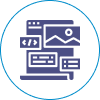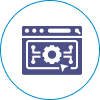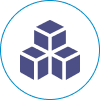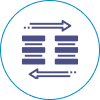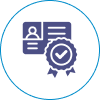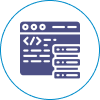1. What is ECT software?
Specialized software created to support several facets of electroconvulsive treatment practice is referred to
as "ECT software." In order to meet the demands of physicians, researchers, and healthcare organizations, it
might contain research platforms, real-time monitoring systems, treatment planning tools, and patient
management systems.
2. Which are the main attributes of the ECT software?
Patient management, treatment planning, stimulation parameter optimization, real-time monitoring, data
analysis, interaction with electronic health record systems, regulatory compliance, and telemedicine
capabilities are some of the key aspects of electroacupuncture therapy (ECT) software.
3. How is patient care enhanced by ECT software?
By supporting customized treatment planning, optimizing stimulation parameters for safety and efficacy,
enabling real-time patient response monitoring, strengthening data-driven decision-making, and encouraging
adherence to best practices and regulatory standards, ECT software enhances patient care.
4. Is it possible to adapt ECT software to various clinical environments?
It is possible to tailor ECT software to the unique requirements and preferences of various clinical
settings, such as clinics, hospitals, research facilities, and academic sites. It can adapt to differences
in workflow preferences, legal requirements, and treatment methods.
5. Does ECT software adhere to privacy standards and is it secure?
Yes, in order to safeguard patient data and maintain anonymity, ECT software is made to comply with stringent
security and privacy regulations, such as GDPR in Europe and HIPAA in the US. To reduce risks, it employs
strong data encryption, audit trails, access limits, and frequent security updates.
6. How is the clinical use of ECT software validated?
Strict validation procedures are used on ECT software to guarantee its effectiveness, safety, and adherence
to legal standards. Clinical trials, user acceptance testing with physicians, testing in virtual
environments, and recording validation results for regulatory submissions are a few examples of what this
might include.
7. What type of assistance and training are offered to users of the ECT software?
ECT software suppliers help therapists, administrators, and IT staff utilize the software efficiently and fix
any issues by providing extensive training programs, user manuals, online resources, and technical support.
Webinars, certification courses, and practical workshops are a few examples of training.
8. In what ways does ECT software support scholarly inquiry and advancement within the
domain?
Participation in clinical trials, data collection for research, and researcher collaboration are all made
easier by ECT software. It permits trend analysis, validation of novel protocols or techniques, and outcome
analysis of treatments, which advances both the technology and practice of electroacupuncture.
9. Does ECT software work with other IT systems used in healthcare?
In order to guarantee interoperability and continuity of care, ECT software is made to smoothly connect with
other healthcare IT systems, including electronic health record (EHR) systems, imaging systems, laboratory
information systems, and telemedicine platforms.
10. How can ECT software be successfully implemented by healthcare organizations?
Effective implementation of ECT software can be achieved by healthcare organizations through comprehensive
needs assessment, vendor selection, training, and buy-in from users. Additionally, the software can be
tailored to the specific workflows of the organization and continuously monitored and evaluated for ongoing
optimization.
Related Services








